
Articles on Greek and Cretan cuisine

In the world of culinary products there is a small group of those for which the storage time is a beneficial factor that allows for greater nobility of taste. As a good example, we can mention wines that have matured for decades to please the palate of wealthy connoisseurs. Unfortunately, this rule does not apply to oil, whose properties and taste virtually from the moment the finished product is obtained are slowly degraded. It is worth asking yourself: how to store oil to slow down this aging process?
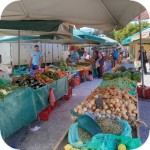
Greek diet is associated with a healthy diet based primarily on a large amount of vegetables and fruits. The health benefits of its use have been the subject of many scientific studies, which confirm the very beneficial effect of the components consumed in this diet on general health. It might seem, therefore, that the Greeks are a very healthy nation in that case. Nothing could be more wrong, as many of them have fundamentally changed their eating habits and behaviors.

One of the biggest novelties that have appeared on the Polish market in the last two years are polyphenol oils originating in Crete and Greece. Last year, we wrote about them twice, but they are still little-known and recognizable products in Poland. For us, this topic has become very interesting, so we decided to look at it even closer. Therefore, we publish further information on polyphenol oils, focusing mainly on the excellent oil Eliama Gold produced by Elli's Farm in Crete.
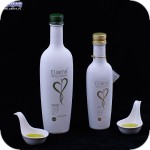
Customers of the kreta24.pl store know that they can find here excellent Cretan and Greek oils and many other organic products. We have already written about a very high quality assortment of this store many times. This time we would like to draw your attention to the very high quality of Eliama oil produced by Elli's farm in Agia Barbara in Crete.

Xinochondros (Ξινόχοντρος) is one of the most traditional food products of Crete, which was already produced in ancient times.

A few days ago, the World Health Organization published a report on childhood obesity. Interestingly, this problem is not only the domain of northern European countries but above all those that are the cradle of the Mediterranean diet. A new WHO report presented at the European Obesity Congress in Vienna pointed out that out of 34 countries in the European region, Cyprus, Greece, Italy, Malta, San Marino and Spain have the highest obesity rate in children from 6 to 9 years. Therefore, being overweight becomes the same problem as in Great Britain.

On the Internet you will find a lot of articles about the quality of oil and its health properties. This is a topic that has been very well developed by many researchers. Recently, however, Greek and American scientists have decided to devote more attention to olives themselves, ie the fruit of the Olea europe tree. The results of their research show that, depending on the method of processing used, olives retain different levels of valuable antioxidants.

Today we have prepared an article for you about polyphenol oils, which are still relatively unknown products on our market. You will also find there the reviews of two excellent oils of this type: Bio Green and Crown.
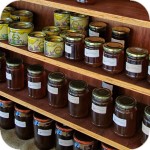
Since 2000, the Institute of Mediterranean Agriculture in Chania has conducted regular research, the main purpose of which is to determine the quality of honey produced in Crete. Currently, the amount of honey examined has been increased to around 500 samples, the vast majority of which comes from Crete.

A few weeks ago, researchers from Greece and Spain dealing with the Mediterranean diet published an article on what the Mediterranean diet is NOT.

We are not surprised by the fact that many plants growing in Crete have healing properties. In the pages of our site we have written many times about the unusual properties of malotiry, dictamus, purge or oregano. This time, we read that the scientists took another Cretan endemic plant under the microscope. Stamnagathi is a chicory variety growing in the wilderness of the Omalos plateau and the White Mountains. Currently, it is also grown by some garden farms.

During our culinary experiments and during the preparation of our everyday meals, we try to reach for unique products from Crete or Greece as often as possible. Many of them permanently fit into our menu and systematically reach our shopping lists. For some time, dried plums and black olives from the Greek company Atrapos have joined the group of this type of products. At the outset, it is worth emphasizing that both products are virtually in the permanent offer of the online store kreta24.pl.

We have been writing about the health-promoting properties of the Mediterranean diet on our website many times. So far, various types of scientific studies have pointed mainly to the links between the Mediterranean diet and the smaller incidence of specific diseases. However, the results of the research recently published by the Annals of Internal Medicine also show the beneficial effects of this diet on better quality of health after the age of 70.

Today we would like to introduce to you black dried salt olives that we discovered in Paleochora during our last holidays. Their amazing salty and very expressive taste makes them a great addition to various dishes, but they also taste fantastic in the form of a self-made snack. Unfortunately, we do not know if you can get it somewhere in Poland because it is a relatively rare product.

About how beneficial for health is the consumption of large amounts of olive oil on a daily basis and the use of the Mediterranean diet we have written many times. The latest research carried out this time by Spanish scientists from the University of Navarra in Pamplona again confirms these health properties.

Origanum dictamnus plant is another flagship product of Crete, also known under the names: Dittany, Δίκταμο, hop majoram, Dittany of Crete or Cretan dittany. It is a perennial crop plant occurring in natural environment only in Crete. Over the centuries, many gatherers have died or injured during attempts to obtain a plant, because it occurs on quite hard to reach areas. Its 20-30 cm bushes are most easily found on limestone mountain slopes, in ravines and on cliffs.

Tomatoes are one of the extremely popular ingredients found in the daily diet of the Greeks. They are rich in vitamin C and lycopene - an antioxidant that contributes to good health. Research shows that tomatoes have phenomenal cancer protection capabilities.

When browsing the stalls with local products in Crete, you will certainly find Malotira, the so-called. Moutain Tea. This popular plant known under the Latin name sideritis syriaca grows wild in the mountainous areas of Crete in the Lefka Ori massif, thanks to which it is devoid of pollution. Malotira is one of many species of gentile, which is popular in the Mediterranean, the Balkans and the Middle East. Sideritis syriaca is a variation occurring only on Crete, and the specific smell of this dried plant and the flavor of the infusion are irresistibly associated with this island.

The fact that the Mediterranean diet is healthy has been written many times. Scientists are systematically conducting various studies on the effects of this diet on human organisms. In recent weeks, the results of studies have been published, the subject of which was the impact of the Mediterranean diet on the level of sugar in the blood. So what do the Greeks eat that their diet works in such a beneficial way?

Mastic is a very aromatic soft natural resin, obtained only on one Greek island. It is a kind of spice, and at the same time an addition to cosmetics and chemistry used in conservation.

Carob is otherwise the carob tree (Ceratonia siliqua L.) or carob tree found among others in the countries of the Mediterranean Basin, India, the Middle East or Australia. This evergreen and heat-resistant tree grows both wild and cultivated. Before sugarcane reeds and beets were disseminated, carob fruit was the main source of sugar due to its nearly 50% sugar content.

Purge belongs to a group of plants that are sometimes also called rock roses. Usually, these are small evergreen shrubs that are intensely covered with flowers during flowering. The area of occurrence of these plants is the southern part of Europe, characterized by a moderate climate - mainly the area of the Mediterranean and Black Sea basins. Many of the 120 species of these plants are also found in the area of both Americas.
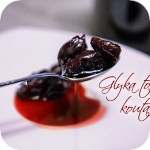
Under the name Glyka tou koutaliou, fruits are found in very sweet syrup prepared in a traditional way in Greek houses. Well-made allow to preserve the shape, color, smell and taste of the fruit. Currently, however, the tradition of preparing these sweets is slowly disappearing, because you can buy them ready, which allows you to save time needed to prepare them.

Before starting any discussion about the quality of oil, it is worth getting acquainted with the classification adopted on the European market. This list includes four basic types: extra virgin olive oil, virgin olive, refined olive oil (pure olive oil), pomace oil.

The turn of August and September is the traditional period when a set of grapes for wine production is started in Crete. One of the most important decisions affecting the quality of the future drink is to determine the most favorable harvesting moment.
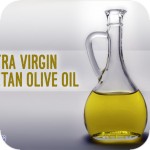
For many years Cretan cuisine has been considered one of the healthiest in the world, which is officially recognized by the scientific community. It is rich in dishes consisting of a large amount of vegetables, fruits, fish and seafood, as well as olive oil and herbs. There is little red meat and animal fats in it. Does its health properties result from the quality and richness of these products?

Greece is the third largest oil producer in the world after Spain and Italy with a market share of over ten percent in the global market. Seeing the many olive groves on Crete probably will not surprise you that less than 1/3 of the total production of Greek oil comes from this island. Similarly high, because almost 27% share only olive groves located on the Peloponnese.

The applicable legal regulations introduce restrictions on the maximum weight of dried plants harvested by a single person. The directive (DAD ΒΛ45ΟΡ1Θ-ΥΡ9) issued by the Forestry Office and valid until 2018 specifies this value as 500 g of dried for individual use. Such restrictions are primarily to counteract excessive exploitation of natural vegetation, which is now too much depleted in many places.

It is herbs added alone or in compositions that add this unique accent to simple Greek dishes. Those growing in Greece are unique due to the unique climate: a large number of sunny days throughout the year, soil, sea climate.

After frappe (φραπές), we are particularly happy to reach hot days, which are not difficult in the south of Europe. Many people at Frappe appreciate the opportunity to combine their passion for coffee with the refreshing effects of cold water and ice. Iced coffee is also a great way to stimulate the body, because a typical glass of this drink contains from 65 to about 100mg of caffeine.

If you are going to Crete for the first time, be prepared for the explosion of real flavors and aromas. Cretan vegetables and fruits are fresh and full of flavor, while wild herbs that smell in the air, emphasize the taste of simple dishes with their intense aromas.

Biolea oil is obtained from the fruits of the Koroneiki variety, which are considered olives best suited to the climatic conditions prevailing in Crete. The features of these plants allow to avoid the use of intensive irrigation of fields.

In every Greek kitchen you will find large jars with dried oregano and mountain oregano. It is sometimes called spice, but oregano is an herb that is an important ingredient in the Greek diet. Greeks add them to almost everything: salads, feta, meat, fish, potatoes and legumes.

Feta is a soft cheese with about 40% fat content. It is also fragile and melts well. Thanks to storage in brine, it retains freshness for a long time. The conditions in which feta ripens affect its taste. It can be spicy, mild or more salty. Greeks usually have their favorite types and buy them.

Since 2007, the name Feta is protected by international regulations and reserved exclusively for cheeses produced in specific regions of Greece using strictly defined ingredients based on the traditional method of production. Thanks to the regulations introduced in the EU, this name can no longer be used by producers from other EU countries producing "salted cheese in brine". Therefore, since then we can be sure that when buying feta we will reach for the original Greek product that will contain nothing but sheep's milk and possibly goat's, rennet and salt. In the composition of feta, we will not find preservatives or other "enriching" additives because the EU provisions clearly define the characteristics of feta. In addition, the Greeks themselves scrupulously and often control the companies that produce this cheese.

Coming back from a holiday in Crete, we bring with us a tan, many pictures and a bag of beautiful memories connected with visiting this charming corner of Greece. However, holidays in Crete are not only breathtaking landscapes, sun or monuments, but also a feast for the palate. Greeks know how to appreciate the multitude of fresh vegetables and fruits, which is why even the simplest dish tastes great there. Greek cuisine shows that very little food would have to be made from simple ingredients. It is also worth remembering that in many scientific studies the local diet has been recognized as one of the healthiest and most sustainable in the world. Greek cuisine can make eating vegetables a pleasure. One thing is for sure, our taste buds were probably born in Crete, because the local cuisine won over our hearts or stomachs.